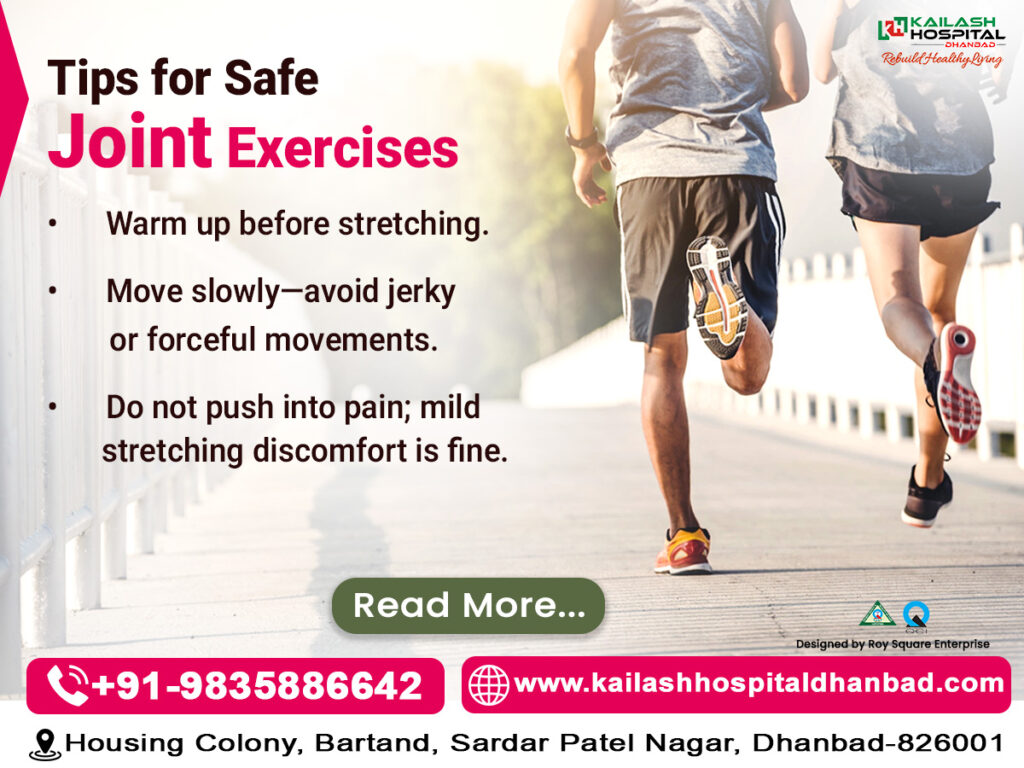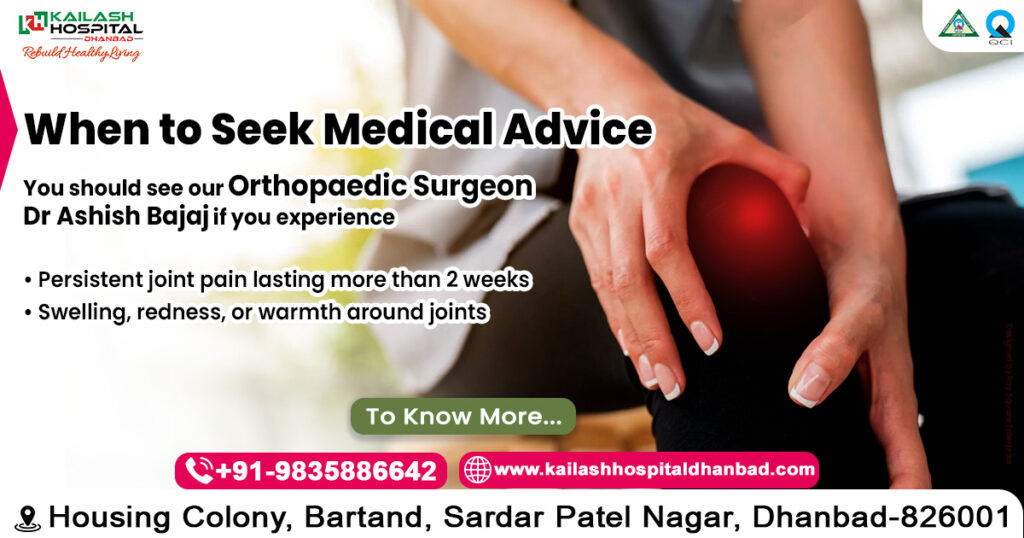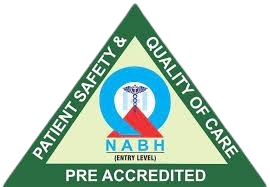Joints are the body’s natural hinges, allowing us to move, bend, twist, and carry out daily activities with ease. Healthy joints are essential for walking, working, playing sports, and maintaining an active life. However, modern sedentary lifestyles, desk jobs, and lack of physical activity have made joint problems increasingly common—even among younger people.
According to Dr. Ashish Bajaj, Consultant Orthopedics, Kailash Hospital, Dhanbad, many people come to him with stiffness, pain, or reduced mobility in joints that could have been prevented with simple daily exercises. The good news is that light mobility drills and stretching routines can make a big difference in keeping your joints flexible, strong, and pain-free.
This blog will explore the importance of joint health, the role of exercise, practical mobility routines, and expert recommendations from Dr. Ashish Bajaj best orthopaedic in Dhanbad, to keep your joints moving smoothly throughout life.
Why Joint Health Matters
Joints connect bones and allow movement. When joints are healthy, they are supported by:
- Cartilage – cushions bones and prevents friction
- Synovial fluid – lubricates joints for smooth movement
- Muscles & ligaments – provide strength and stability
Without care, joints may become stiff, inflamed, or painful, leading to conditions such as:
- Arthritis – joint inflammation and pain
- Osteoarthritis – wear-and-tear damage to cartilage
- Joint stiffness from inactivity
- Reduced range of motion
As Dr. Ashish Bajaj, best orthopaedic in Dhanbad emphasizes, “Exercise is medicine for the joints. Even light mobility work can prevent stiffness, improve blood flow, and maintain long-term flexibility.”
Benefits of Exercises for Joint Health
- Improves flexibility – keeps muscles and ligaments supple.
- Enhances circulation – synovial fluid flows better with movement.
- Reduces stiffness – especially important for desk workers.
- Strengthens muscles – supports and protects joints.
- Prevents arthritis progression – movement reduces inflammation.
- Improves posture and balance – lowering the risk of falls.
Light Mobility & Stretching Ideas for Joint Health

Here are doctor-approved exercises recommended by Dr. Ashish Bajaj that are gentle, safe, and effective for most people.
1. Neck Mobility Exercises
- Neck Rotations – Slowly turn your head side to side.
- Chin Tucks – Pull your chin gently toward your chest.
- Helps reduce stiffness from prolonged screen use.
2. Shoulder Stretches
- Shoulder Rolls – Roll shoulders forward and backward.
- Arm Cross Stretch – Pull one arm across the chest and hold.
- Keeps shoulders relaxed and prevents frozen shoulder.
3. Wrist & Hand Stretches
- Wrist Circles – Rotate wrists clockwise and anti-clockwise.
- Finger Stretches – Open and close fists repeatedly.
- Important for desk workers and those who type a lot.
4. Spine & Back Mobility
- Cat-Cow Stretch – Alternate arching and rounding your spine.
- Seated Spinal Twist – Twist gently while sitting upright.
- Improves posture and reduces back stiffness.
5. Hip Mobility
- Hip Circles – Rotate hips gently in both directions.
- Knee-to-Chest Stretch – Pull one knee at a time toward the chest.
- Prevents lower back and hip tightness.
6. Knee-Friendly Movements
- Seated Leg Extensions – Extend one leg at a time and hold.
- Mini Squats (with support) – Bend knees slightly while holding a chair.
- Keeps knees strong without high impact.
7. Ankle & Foot Flexibility
- Ankle Circles – Rotate ankles in both directions.
- Toe Raises – Lift up on your toes, then relax.
- Reduces stiffness in feet, improves balance.
Tips for Safe Joint Exercises

- Warm up before stretching.
- Move slowly—avoid jerky or forceful movements.
- Do not push into pain; mild stretching discomfort is fine.
- Stay consistent: 10–15 minutes daily is more effective than occasional long sessions.
- Consult specialists like Dr. Ashish Bajaj best orthopaedic in Dhanbad at Kailash Hospital, if you already have arthritis or chronic joint pain before starting new exercises.
Lifestyle Habits for Healthy Joints
- Maintain a healthy weight – reduces pressure on knees and hips.
- Eat joint-friendly foods – rich in omega-3s, calcium, and vitamin D.
- Stay hydrated – water keeps cartilage and joints lubricated.
- Use correct posture – prevents unnecessary strain.
- Avoid prolonged sitting – move every 30–60 minutes.
When to Seek Medical Advice

You should see an orthopedic specialist like Dr. Ashish Bajaj if you experience:
- Persistent joint pain lasting more than 2 weeks
- Swelling, redness, or warmth around joints
- Reduced range of motion
- Joint pain interfering with daily activities
Early intervention can prevent minor joint issues from becoming chronic conditions.
Top 10 Myths vs Facts About Exercises for Joint Health
Myth 1: Exercise damages weak joints.
Fact: Light exercises strengthen and protect joints.
Myth 2: Only older people need joint exercises.
Fact: Everyone, including young adults, benefits from them.
Myth 3: Rest is better than exercise for joint pain.
Fact: Too much rest worsens stiffness; gentle movement helps.
Myth 4: Cracking joints means damage.
Fact: Popping sounds are often harmless unless painful.
Myth 5: Running always harms joints.
Fact: Moderate running with proper shoes can actually strengthen them.
Myth 6: Supplements alone keep joints healthy.
Fact: Lifestyle, diet, and exercise matter more.
Myth 7: Joint pain is a normal part of aging.
Fact: With care, many people enjoy pain-free joints in old age.
Myth 8: Only athletes need joint exercises.
Fact: Desk workers and sedentary people need them even more.
Myth 9: If joints hurt, avoid all activity.
Fact: Gentle, controlled movements ease discomfort.
Myth 10: It’s too late to start joint care after 50.
Fact: Exercises benefit joints at any age.
Top 10 FAQs About Exercises for Joint Health
- Why are mobility exercises important for joints?
Because they improve flexibility, lubrication, and reduce stiffness. - How often should I do joint exercises?
Ideally, 10–15 minutes daily. - Are these exercises safe for arthritis patients?
Yes, gentle movements are safe, but consult a doctor like Dr. Ashish Bajaj first. - Can stretching alone keep joints healthy?
Stretching helps, but strength training and good diet are also important. - Do joints get weaker with age?
Yes, but regular mobility work slows the process. - Can I exercise joints if I have pain?
Mild pain is okay, but stop if pain worsens and consult a doctor. - Are yoga and Pilates good for joints?
Yes, both improve flexibility and strength without strain. - Do I need special equipment for joint exercises?
No, most can be done at home without equipment. - Can exercise prevent arthritis?
Exercise reduces the risk and slows progression of arthritis. - Who should I consult for joint-related pain?
An orthopedic specialist like Dr. Ashish Bajaj at Kailash Hospital, best orthopaedic in Dhanbad.



